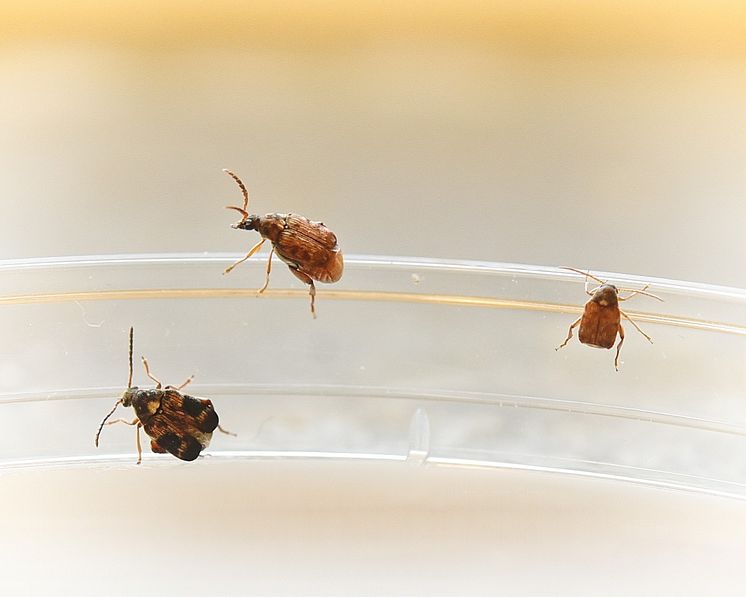
Image -
Sexual size dimorphism under selection
Female seed beetle Callosobruchus maculatus (with darker colouration) and two males that differ in body size. In our study we used artificial selection to increase sexual size dimorphism, and the beetles in the photo show the variation in sex difference in size after selection.
Elina Immonen
- License:
- Media Use
The content may be downloaded by journalists, bloggers, columnists, creators of public opinion, etc. It can be used and shared in different media channels to convey, narrate, and comment on your press releases, posts, or information, provided that the content is unmodified. The author or creator shall be attributed to the extent and in the manner required by good practice (this means, for example, that photographers should be attributed).
- By:
- Elina Immonen
- File format:
- .jpg
- Size:
- 2103 x 1683, 568 KB